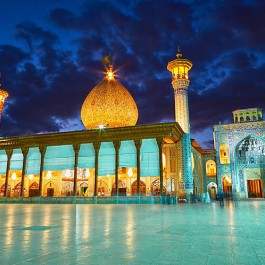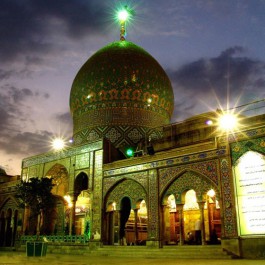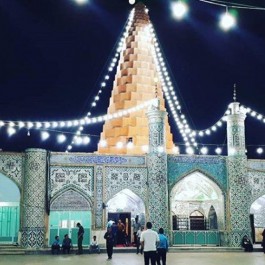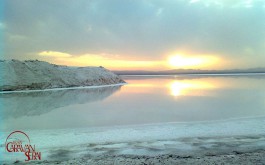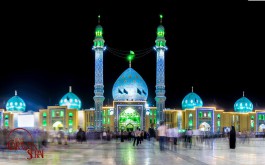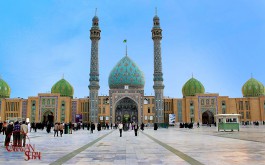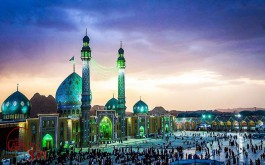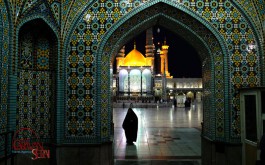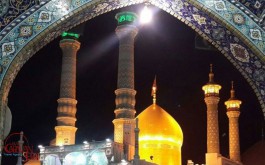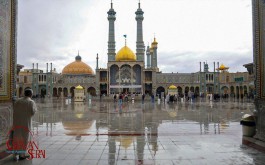Qom is one of Iran's metropolises which located in a 125 kilometers distance to south Tehran, the capital of Iran. The city is situated adjacent to Qomrud River and in Qom plain. Qom city is the capital of Qom province and also Qom County.
Multiple titles are attributed to Qom city, but The "Religious Capital" and "The Cultural Hub" are the formal titles that are used in the media and Qom municipality. There are numerous epithets for Qom as the followings:
The Shrine of Ahl-e Beit (Ahl-e Beit: Imams and their family members), the science city, the center for Iran's diverse ethnicities' gathering, the cheapest city of Iran, the city of Sohan (Sohan is a traditional Persian saffron brittle toffee), the city of Qonabid (Qonabid is a local cabbage cultivated in Qom), nest of Al Muhammad, Madinat-Al Momenin (the city of believers), the resting place for believers, and Dar-Al Movahedin (the house of believers).
Finding places of interest in Qom for Iran tours
Prophet Masumah (AS)
Qom is the silk carpet capital of Iran and the world, the computer capital of Iran, the internet capital of Shia world, the second capital of child and adolescent literature in Iran, motorcycle production hub in Iran, production hub of Islamic science software in Iran, one of the three hubs of bag and shoes production in Iran, Qom is also known as the second book publishing hub (after Tehran) and the largest publishing hub for religious books in the Middle East.
The daughter of Musa ibn Jafar (the seventh Imam of Twelver Shia Imam) commonly known as Fatemeh Masumeh was buried in Qom and many Shia clerics had resided in this city. The mausoleum of Fatemeh Masumeh is located in the center of Qom. The masusoleum leads to Astaneh Square from the north, Ayatollah Marashi Najafi Street from the east, Azam Mosque and Moozeh Street from the south, and Feyziyeh School from the west. In 1208 AD, "Amir Mozafar Ahmad ibn Ishmael", the greatest tile master of the time, appointed "Muhammad ibn Abi Taher Kashi Qomi" to tile the mausoleum. In 1216 AD, the tiles were prepared and installed; the mausoleum was recently renovated as a combination of tile and stone in 1998.
Jamkaran Mosque
Moreover, the largest seminary in Iran and the management center of Iran's seminary are located in the city. The "Secretariat Assembly of Experts for Leadership" is also situated in Qom. The pilgrimage significance of the city is firstly attributed to the mausoleum of Fatemeh Masumeh, and secondly to multiple tombs of Alavian and Imams' descendants and also Jamkaran Mosque. After Mashhad, Qom is the second city of pilgrimage in Iran. There are reasons that caused Qom to be the host of more pilgrims since Safavid Dynasty; on the one hand, separation of Al-Atabat Al-Aliyat (the shrines of six Shia Imams) from Iran and joining to the Ottoman Empire, on the other hand, the long distance between Mashhad and the central parts of Iran.
It was narrated that more than a thousand years ago, Sheikh Hassan ibn Muthlih Jamkarani was called to meet Muhammad al-Mahdi (the twelfth Shia Imam) on a Tuesday night, 17th Ramadan, in 983 AD. Jamkarani had met Muhammad al-Mahdi with a group of companions at the current location of Jamkaran Mosque where he was commanded to build the mosque. Jamkaran Mosque is located in a 6 kilometers distance to Qom city towards Kashan road, near Jamkaran village. Jamkaran Mosque is one of the significant shrines of Qom province that every Wednesday night attracts thousands of pilgrims from different parts of the country.
Getting to know the city's natural and tourist attractions for the tour of Qom
Namak Lake
Namak Lake (Salt Lake) is one of the natural attractions of Qom province. The lake is a part of Kavir-e Namak (Salt Desert) which is situated in the east of Qom and it only has water in winters. The southern part of the lake is certainly worth a visit in the beginning of summer when salt layers are cut from the lake.
Caves
Vashnaveh Cave: There are four caves in a 60 kilometers distance to Qom in Ardehal Mountain. There is a huge resource of water in one of these caves. The water flows from the mountain slit and erupts as a spring. This cave is one of the most spectacular attractions in Qom province. Kahak cave is located in a 30 kilometers distance to south Qom. Kahak is also accounted as one of the natural and historical attractions of the province.
Kahak city
Kahak city is surrounded by heights from its three sides and Zeydan valley is situated at its east. Therefore, the city has a moderate climate. Imamzadeh Zeynab Khatun (The tomb of one of Shia Imams' descendants), Molasadra house, and the well known cave of Kahak are significant factors in attracting tourists to this region. Molasadra Shirazi had been lived in the city for a long time and many of his precious books are kept in this place.
Howz e Soltan Lake
Howz e Soltan Lake is 330 square kilometers in area which is also well known as "Qom Lake", "Shahi Lake", and "Saveh Lake". The lake is located in west- east direction in the North West of Namak Lake and the north part of Qom province. According to the name Saveh, some people attributed the lake to Howz e Soltan, as Gobineau and Dieulafoy had written in their travel literatures that Howz e Soltan Lake was probably a part of the great sea of Saveh. There is a belief that the lake was dried on the day when the prophet Muhammad was born which is a clear manifestation of Muhammad Prophet.
